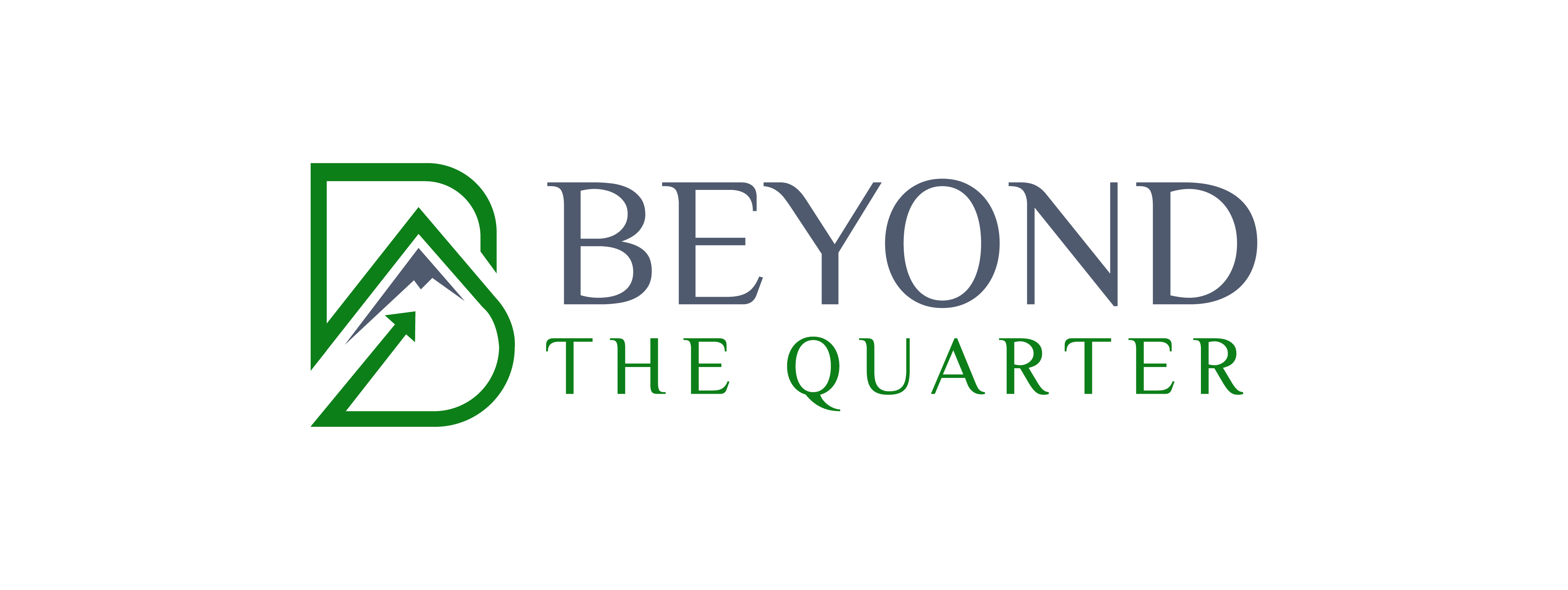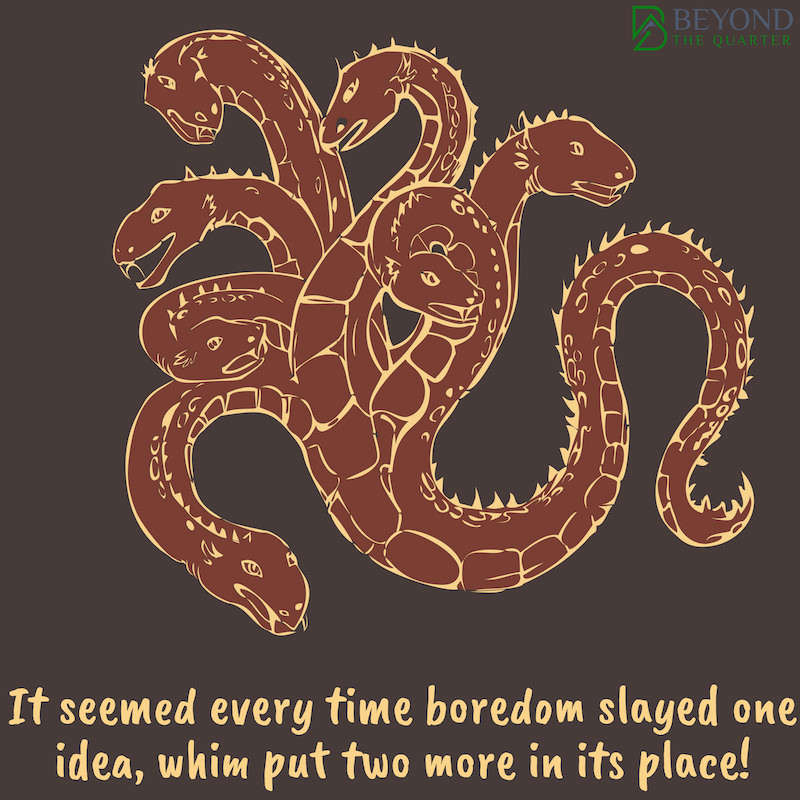Early on in most company’s lives, the key thrust is the hustle. And rightly so. Finding clients, especially if you’re a cash flow business such as consulting, but even after required investment in a product business, takes prominence either to pay ongoing bills, to convince investors not to pull the plug, or in reality in all cases, to prove that there is a business at all.
The challenge is that many businesses, even as they grow, don’t get past the hustle phase. A big part of that is that they can’t make bigger picture things – aka strategy or purpose – happen. It takes different mechanisms, different skills and different structures to do that. The transition is very much doable, but needs intent.
But what tends to happen is that hustle behaviours and ways of working continue. And while hustle, in my books, should never go away, it should in a scaling company have a home (mostly in business development) rather than being the defining operational mindset of the whole company.
———-
Most CEOs I know are fantastic hustlers, but also ones who read and study. And a lot of that reading and studying is on strategy – whether some of the literary greats, or the many articles pumped out regularly by the business press.
Yet the vast majority of their companies aren’t implementing strategy. They’ll do strategy days and sessions, but what comes out of them rarely actually turns into what the company does.
The patterns and reasons are commonplace. If you run an SME and are honest with yourself, you’ll recognise many of these.
And if you don’t, your leadership team almost certainly will! Over the next few newsletters, we’ll dive into some of these and ways to overcome them. But here’s a lightening tour of the most common symptoms.
1) Vagueness. I’ve seen many companies whose strategy has things like “marketing” or “profitability” as objectives. These are both great themes, but they’re not strategies. There’s a complete lack of clarity over what they actually are. It’s difficult to align a team behind them. And they’re open to so many interpretations that we’re guaranteed to have nothing happen fast.
2) No urgency. Wonder why sustainability’s been taking so long to gain traction? I blame 4 words. “Net Zero by 2050”. How urgent does 27 years away feel to you? It’s no surprise that the recent uptick has come at a time when we’re actually seeing the impact – whether in warming, in increased freak events, in migration or in pollution. Once these have landed in our faces, there’s more immediacy. Most strategy feels the same. It talks to a year at best, or 3 to 5 years. No one does anything about a 5 year strategy. Caveat – a 5 or 10 year vision may absolutely be helpful. But don’t confuse that with a strategy.
3) 473 key priorities. We business owners / entrepreneurs are a bloody nightmare for ideas. We come up with a couple with each shower we have. The thrill of the new means that we come to our teams with too many initiatives. And with a thousand initiatives comes a complete lack of prioritisation. FACT – our resources are limited. Once you accept this ugly truth, you recognise that we have to give our teams a priority if we’re expecting anything to get done. Even if we master that, the consequent de-prioritisation becomes a nightmare. Actively saying we’re NOT going to some things which feel like great ideas. I always tell the people that I work with that 20% of 15 is only the same 100% of 3 in a maths test. In terms of business strategy, 20% of 15 initiatives is actually zero done.
4) Not deciding. I’ve sat in countless board and leadership team meetings where great debates have been had about strategic initiatives. In 90% of them, no decision is made. People often THINK that a decision was made, but nothing explicit is agreed, and even less is documented so that they can come back to it and plan. Worse, many times, a decision is nominally made, but those slightly unhappy with it go ahead and do something else. Which is the same as not deciding.
5) Confusing a great Powerpoint presentation with strategy. Or a detailed spreadsheet. We can make magnificent block diagrams all day long, but the slides don’t reflect a plan and numbers on a spreadsheet don’t take into account humanity. A strategy without a plan is just an idea. We need to quickly move beyond the spreadsheets and slides into actual plans with real people.
6) Self deception. So often both with strategies and strategic implementation, I see leadership teams kidding themselves. Assuming that “just try harder” will yield a different result. Planning on the basis that we’ll magic time out of thin air, or worse, assume that our day to day will leave us enough time. This invariably leads us to have eyes bigger than our stomachs and taking on too much.
7) Misaligned leadership and owners. With multi-owner companies, I’ve often seen the owners not fully aligned. This happens most fundamentally if one wants growth, and the other lifestyle. Both of these goals are noble – neither is inferior to the other. But they can’t cohabit. Because each will drive a different strategy.
8) “Day job” intervention. In SMEs, everyone has an operational day job. Whether in sales, or delivery, or finance, or whatever. And everyone can, without trying very hard, work 24×7 on the day job. The challenge is that this leaves no room for strategic execution. And the ugly reality is that often, time can be carved out, but because the day job is our comfort zone and one where we feel immediate results, we often either explicitly choose to stay there, or convince ourselves against an open door that we need to stay there.
9) The latest strategic craze. So I admit that we have our own (proven) way to deliver strategy – our Build on Purpose methodology. But it’s far from the only one. And also far from the only one that works. What I see amongst ambitious CEOs who see their strategy not happening is that they’ll dive into the next method to run business. And the problem is actually rarely the approach – there are many great ones out there. The challenge is actually discipline in execution, and discipline in the CEO to address lack of discipline in the team!
10) Build in concrete. So many strategic plans are built in concrete in a world that is more fluid by the day. They don’t build in the ability to learn and change. Or if they change, it’s because of whim rather than learning.
———–
Over the next few newsletters we’re going to go from the problems above to how we’ve solved them with the SMEs we work with. There’s also a fast-track if you want to register for my weekly live workshop addressing specifics. Details below.
But failing that, next week we’ll be talking about how to actually make strategy stick.
How we can support you
- Join us to support you as you scale your company; create time to focus on the bigger picture; and keep values and purpose at the core.
- Subscribe to our Bite-Sized Business Tips - thought snippets for values-centred business leaders. Every few days, a short focussed read on a specific topic of how to lead a company that values both profit and purpose.
- Talk to us to explore how we can help you scale your company in the direction you want to take it.

